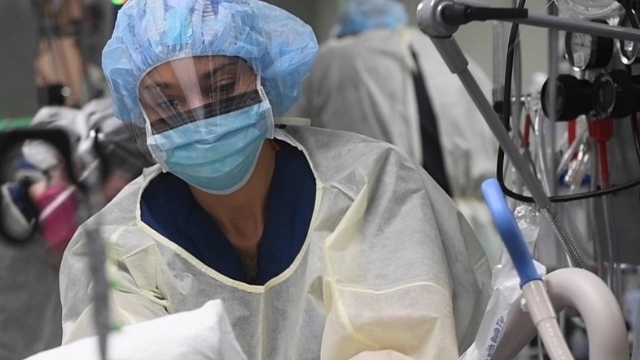Europe’s most authoritative scientific research center has concluded that the laboratory hypothesis “is not a conspiracy theory” but a real possibility
by Massimo Introvigne

While the world is concerned about the number of those infected with COVID-19 and the perspective of new quarantines devastating for the economy of several countries, on October 27 the French National Center for the Scientific Research (CNRS), regarded as the second most authoritative science research center in the world and the first in Europe, dropped a bomb on the question of the origin of the virus. It did not make too much noise, because we are all now more interested on the effects of the virus than on its origins. But the text deserves to be known.
Summarizing months of research, CNRS leading virologist Étienne Decroly explains, on one of the CNRS official Web sites, that there are still many things scientists do not know about COVID-19, but something they believe they know is it originated from bats. The genomic sequence of the virus responsible for the COVID-19 has a similarity of 96% with a virus found in the feces of bats in the Chinese province of Yunnan since 2013. The bat origin is a conclusion now accepted by most scientists throughout the world.
The question, however, the CNRS scientist states, is how the virus went from bats to human beings. “To this date, he says, there is no evidence that any epidemic went directly from bats to humans.” Researchers, according to Decroly, look for an “intermediary host” connecting the infected bats to the first infected humans. Before the COVID-19, other viruses went from bats to humans through civets and dromedaries. Decroly reports that the hypothesis that a single pangolin was the “intermediary host” has not been confirmed, and now some believe that there was a multiple cross-breeding of the virus between bats and pangolins, resulting in the deadly combination that appeared in one animal on sale at the wet market in Wuhan, which infected a human being.
Yet, the CNRS scientist adds, this hypothesis is far from being certain. First, “because of geography: the bat viral samples were collected in Yunnan, nearly 1,500 km from Wuhan where the pandemic broke out.” Then, “for an ecological reason: bats and pangolins evolve in different ecosystems and one wonders on what occasion their viruses could have combined.” Third, and most importantly, the rate of identity between the virus responsible for COVID-19 and pangolin sequences “is only 90.3%, which is much lower than the rates usually observed between human and intermediate host strains. For example, the genome of the virus responsible for the SARS and the genome of the civet strain from which it was descended share a 99% identity.”
As a consequence, Ducroly reports that “the majority of scientists now believe that pangolins had nothing to do with the emergence of the virus,” They looked for other animals that may have played the role of “intermediary hosts,” but so far did not find any. This is why the “laboratory accident” hypothesis, that some dismissed as a conspiracy theory, remains according to the CNRS scientist a credible alternative.
Although there is no hard evidence for this hypothesis either, it “cannot be excluded,” considering also that incidents in laboratories studying bat-related viruses happened before, and that Chinese laboratories studying these viruses exist precisely in and near Wuhan.
Summing up, Ducroly states that there are three possibilities about the origin of the COVID-19 virus. The first is that it passed from bats to humans through an animal that served as “intermediary host.” But “we should keep in mind that this animal has not been found.” The second is that in fact COVID-19 did not originate in 2019 but was an illness circulating among humans from many years, undetected because cases were rare. This second hypotheses would still raise the question how the virus infected humans in the first place, but to confirm it bodies of people who died of pneumonia in the Wuhan area before 2019 should be exhumed and analyzed.
The third hypothesis is that the virus we now deal with “is descended from a bat virus isolated by scientists during virus collections, and adapted to other species during studies on animal models in a laboratory, from which it then accidentally escaped.” This is not a conspiracy theory, the CNRS expert states, and should not be confused with theories claiming that the Chinese created a biological weapon or intentionally infected the world. The CNRS does not support these theories. Decroly believes that the manipulations of bat-related viruses may happen in Chinese laboratories for legitimate scientific research purposes. However, he also believes that, particularly since incidents already happened in the past, security precautions may not have been sufficient, and these experiments should have been stopped as too dangerous.
Until and unless hypothesis 1 or 2 (but 2 will simply move the problem to the past, without really solving it) can be proved, nobody, the French researcher concludes, has the right to dismiss hypothesis 3 as a conspiracy theory. “Studying the origin of SARS-CoV-2 is a scientific approach that cannot be assimilated to a conspiracy thesis. Moreover, adds Decroly, I insist on the fact that, as long as the intermediate host has not been found, this hypothesis of an accidental escape cannot be dismissed by the scientific community.” “The question of the natural or synthetic origin of SARS-CoV-2 should not depend on a political agenda or communication strategies. It deserves to be examined in the light of the scientific data we have at our disposal. Our hypotheses must also consider what is currently achievable in virology laboratories; and the fact that in some laboratories, the manipulation of the genome of potentially pathogenic viruses is a common practice.” The CNRS scientist is, understandably, extremely cautious. But beyond this caution lies the fact that, if the third hypothesis is confirmed as the most believable one, a “mistake” made by a Chinese laboratory “manipulating potentially pathogenic viruses” is the cause of more than one million death, and months of difficult life, throughout the whole world. Will the Chinese Communist Party pay the bill?
Source: Bitter Winter












